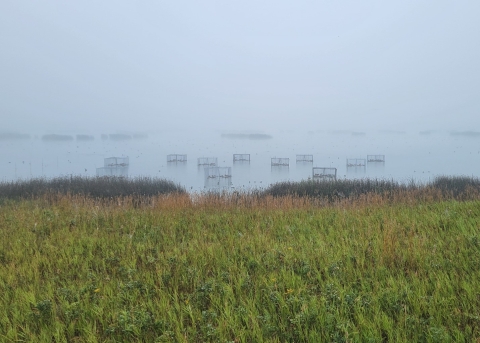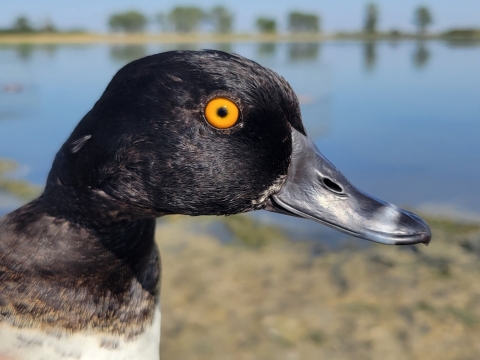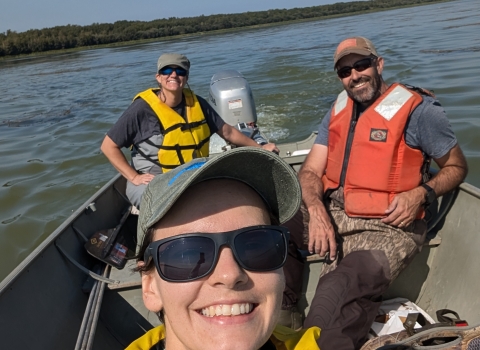You know how everyone occasionally needs a day of leave or a long weekend to recharge their internal battery so they can come back to work with a new sense of vigor and ready to tackle the challenges that come their way? Well, I was really feeling this by the time August rolled around, so a break from my normal duties to get away and do something new was beyond exciting. Participating in the U.S. Fish and Wildlife Service’s Waterfowl Banding Operations was exactly the change of pace I needed, and I just didn’t quite know the magnitude of how important the experience was to me.
As I left south Texas on an early August morning and headed to Saskatchewan, I really had no idea what to expect. Upon arrival, I learned our crew consisted of Walt Rhodes, Crew Leader and Pilot Biologist from Oregon; Jaime Allen, Refuge Manager from Idaho; and Christopher Romero, Legal Instrument Examiner from New Mexico. They all had one thing in common – they had been on this crew in 2023 (Walt and Jaime well beyond that!) which meant I was the newbie on board and I had some catching up to do. The crew immediately welcomed me and took me under their wings (love a good bird pun), and we very quickly became a seamless duck banding squad. By the end of the season, the four of us had banded a total of over 5,500 ducks; the highest number of ducks ever banded at the station! Somewhere along the way we even managed to squeeze in time to check off a bucket list item of mine: the northern lights!
For me, this experience was like a flashback to my days doing field work, which are now mostly behind me. But for some of the crew members, this was a completely new experience. It’s an amazing opportunity for those people who may not have a biology background and never got the chance to experience long days in the field. It is also a great opportunity to cross paths with and meet those people in all different positions that you might not have the opportunity to meet otherwise. You never know what invaluable knowledge you might gain from meeting new people, and those connections might even guide you to your next step in your career or perhaps a step far off in the future of your career. There is a unique long-lasting bond that forms between crew members in the marsh, covered in scratches and duck feces, that you just can’t get anywhere else!
On our drives between trap sites, there was time for reflection. I thought about how vastly different this work was from my day-to-day job at my Refuge. It is easy for us to get so focused on our local issues and duties and lose sight of how our individual jobs at our field stations or refuges are connected to the bigger picture. My refuge complex in south Texas (South Texas Refuge Complex) supports a large population of wintering waterfowl each year, and much of our management practices are geared toward providing food and habitat for them. But it is easy to get caught up in that local management and forget WHY those efforts are so important. It came full circle for me to see these thousands of ducks on their breeding grounds in Saskatchewan that would not be so numerous and healthy without that habitat we provided on our refuge complex 2,000 miles away in south Texas, and other refuges like ours.
I came out of this experience with numerous cuts, bruises, achy joints and muscles…but also mentally refreshed, stronger than ever, and with a renewed sense of purpose; knowing that I personally contributed to an integral link in the chain of conservation.







